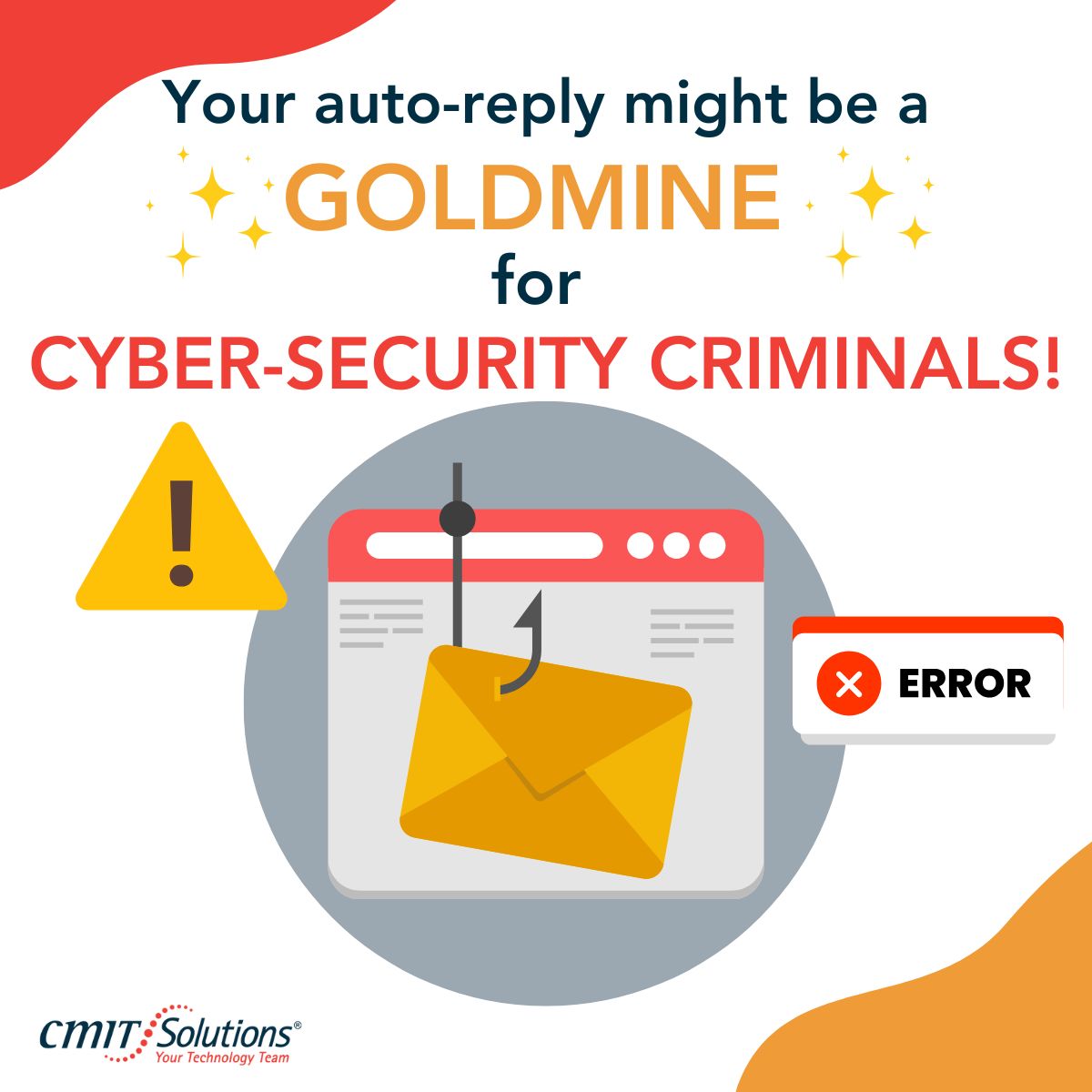 You set it and forget it. As you're packing for vacation, your inbox starts broadcasting: "Hi there! I'm out of the office until [date]. For urgent matters, please contact [coworker's name and email]." This seems harmless and convenient, right? Unfortunately, it's exactly what cybercriminals love to see.
You set it and forget it. As you're packing for vacation, your inbox starts broadcasting: "Hi there! I'm out of the office until [date]. For urgent matters, please contact [coworker's name and email]." This seems harmless and convenient, right? Unfortunately, it's exactly what cybercriminals love to see.
Your auto-reply—the simple message designed to keep things organized—can become a treasure trove for bad actors looking to breach your sensitive data.
Let’s break it down. A typical out-of-office message might include:
- Your name and title
- Dates you’re unavailable
- Alternate contacts (with their email addresses)
- Internal team structures
- Details about your absence ("I’m at a conference in Chicago…")
This provides cybercriminals with two major advantages:
- Timing: They now know you’re unavailable and less likely to notice suspicious activity.
- Targeting: They know who to impersonate and who to target with their scam.
This becomes the foundation for a perfect phishing or business email compromise (BEC) attack.
How The Scam Usually Plays Out
- Your auto-reply message is sent.
- A hacker uses it to impersonate you or the alternate contact listed.
- They send an “urgent” email requesting a wire transfer, password, or sensitive document.
- Your coworker, caught off guard, assumes it’s legitimate.
- You return from vacation to find that someone sent $45,000 to "a vendor."
Such incidents happen more often than you might think, and they pose even greater risks for businesses with frequent travelers.
If your company employs staff who travel frequently, especially executives or sales teams, while others handle communications in their absence (like a personal assistant or office admin), this sets prime conditions for cybercriminals:
- Admins field emails from multiple people.
- They are accustomed to handling payments, documents, or sensitive requests.
- They work fast, trusting the sources they believe are legitimate.
One well-crafted fake email can slip through, leading to a costly breach or fraud incident.
How To Protect Your Business from Auto-Reply Exploits
The solution isn’t to abandon OOO replies altogether; it’s about using them wisely and implementing safeguards. Here are a few strategies:
1. Keep It Vague
Avoid detailed itineraries. Don’t list who’s covering for you unless necessary.
Example: “I’m currently out of the office and will respond to your message upon my return. For immediate assistance, please contact our main office at [main contact info].”
2. Train Your Team
Ensure your staff knows to:
- Never act on urgent requests involving money or sensitive info based on email alone.
- Always verify unusual requests through a second channel, like a phone call.
3. Implement Email Security Tools
Utilize advanced email filters, anti-spoofing measures, and domain protection to cut down on the chance of impersonation attacks reaching you.
4. Use MFA Everywhere
Enable multifactor authentication (MFA) across all email accounts. Even if a hacker gets hold of a password, MFA keeps them from accessing accounts.
5. Work With an IT Company That Monitors Activity
A proactive IT support partner can detect login attempts, phishing attacks, and abnormal behavior before any damage is done.
Want To Vacation Without Becoming a Hacker's Next Target?
At CMIT Solutions St. Louis, we help businesses implement robust cybersecurity systems, even when your team is out of the office.
Click here to book a FREE Security Assessment. We’ll examine your systems for vulnerabilities and show you how to mitigate risks so you can actually enjoy your vacation without worrying about your inbox betraying you.



